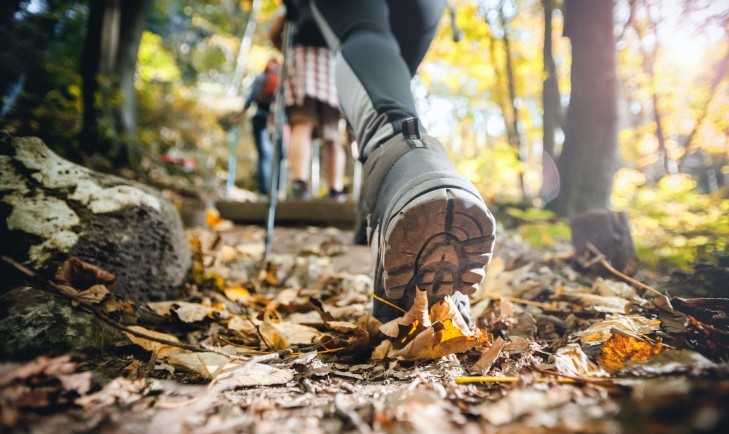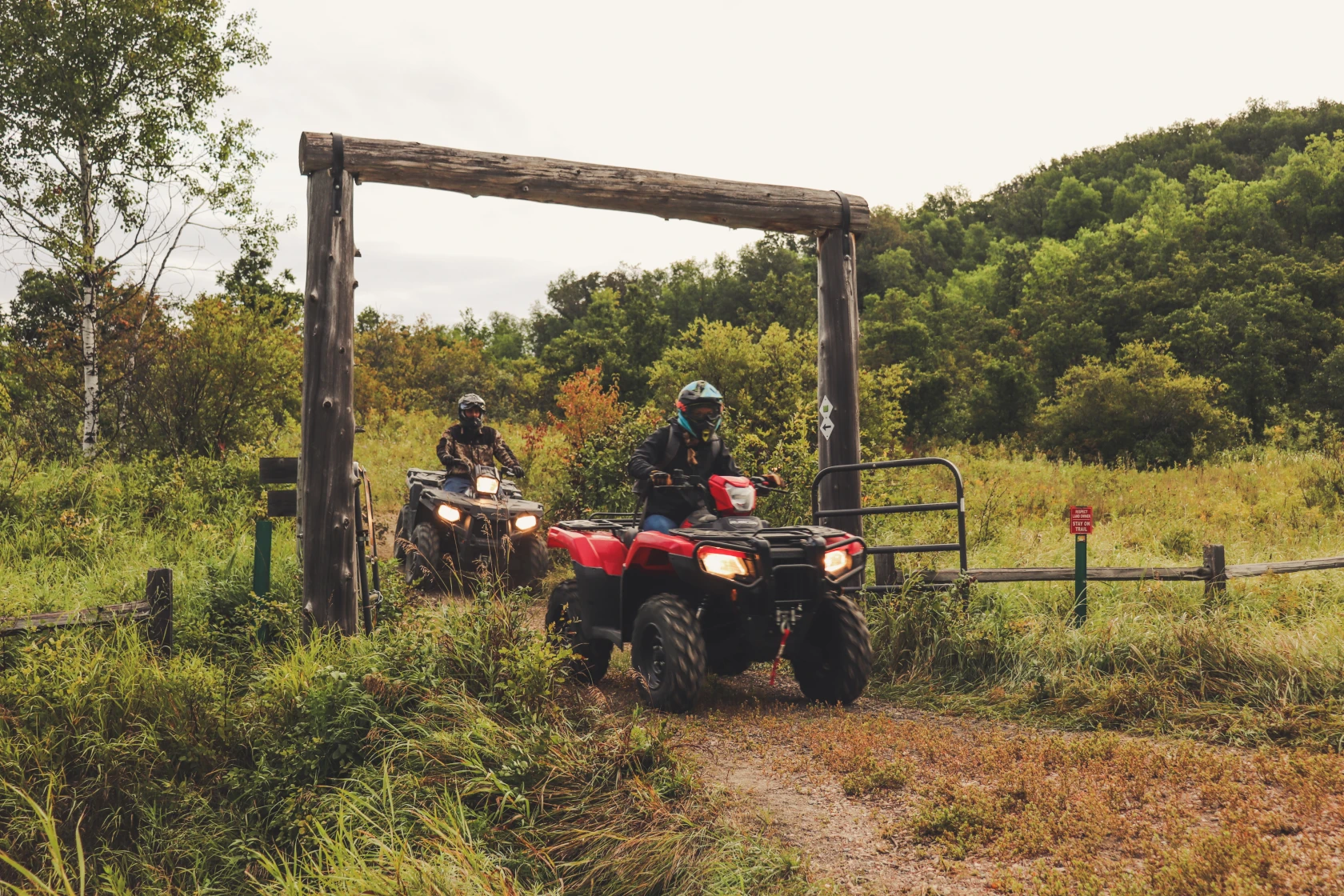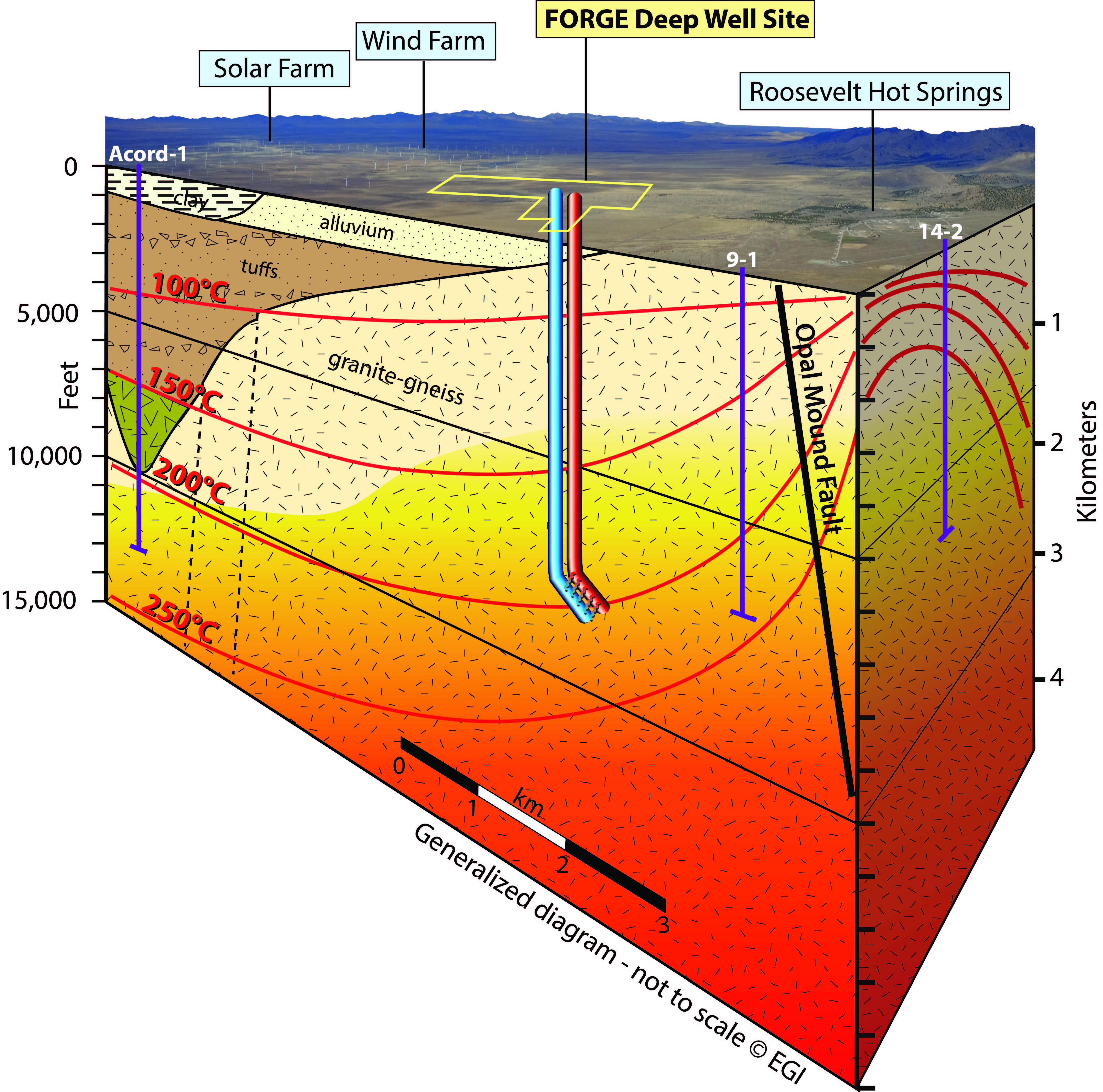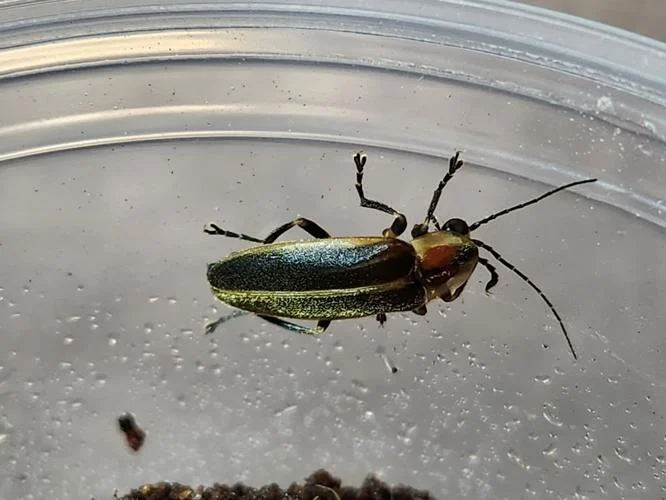07/13/23
Best of the West: expanding outdoor recreation; a geothermal breakthrough; building out carbon capture infrastructure; help for missing and murdered indigenous people, and researching fireflies.

The Western Governors' Association keeps you updated on the latest news in the West. Here are the top stories for the week starting July 10, 2023. (Photos courtesy of North Dakota Parks and Recreation Department, Utah FORGE, and the Butterfly Pavilion).
The outdoor recreation economy accounted for nearly 2 percent ($454.0 billion) of the nation’s gross domestic product in 2021 (2022 numbers will be released in November). With interest in outdoor recreation continuing to grow, many Western states are investing in recreational opportunities that help boost the economies of rural towns, support conservation, and help disperse crowds.
The Utah Division of Outdoor Recreation just awarded over $20 million in grants to enhance outdoor recreation opportunities throughout Utah, the most to date awarded by the state. The division will award more than $16 million in Utah Outdoor Recreation Grant funds to 90 outdoor recreation infrastructure projects in 24 counties across Utah, and $4.2 million in Off-Highway Vehicle Recreation grants to 51 OHV-related projects in 28 counties.
Since 2015, the Utah Outdoor Recreation Grant has awarded over $50 million to 489 projects for building or restoring outdoor recreation infrastructure across Utah. The OHV Recreation Grant has funded more than $10 million to 270 projects since it was created in 2020.
Colorado Governor Jared Polis, established the Outdoor Regional Partnerships Initiative grant program by executive order in 2022 to foster collaboration among stakeholders for safeguarding the state’s lands and waters and preserving its outdoor recreational opportunities. Last week, he announced the latest group of grant recipients: The Metro Denver Nature Alliance, which is dedicated to expanding nature access, and NoCo PLACES 2050, dedicated to combating issues presented to nature in the face of growing visitation rates.
After this round of grants, there are now 16 regional partnerships spanning various regions of Colorado. These partnerships tackle a wide range of issues, including wilderness areas and trail system management, camping management, funding, and climate resilience.
New Mexico launched a similar program in 2020 entitled the Outdoor Recreation Trails+ Grant program. This year, it will award $10 million to projects that grow outdoor access for both residents and visitors, as well as preserve the state’s wild places. Since it was founded, the program has funded more than 90 projects across New Mexico. Examples of projects include trail design or construction, signage, river access, whitewater amenities, outdoor classroom infrastructure, trailhead improvements, picnic shelters, and wildlife viewing areas.
Wyoming recently joined the growing list of states that are investing government dollars in the outdoor recreation industry when Wyoming Governor Mark Gordon House Bill 74 – Wyoming outdoor recreation and tourism trust fund into law this spring. The $6 million trust fund is designed to award grants to outdoor recreation projects that embrace and capitalize on, outdoor recreation — from mountain bike trails to shooting ranges, off-road routes, and campgrounds.
 With $6 million approved by the State Legislature earlier this year, and a $2 million match from a federal Land and Water Conservation Fund grant, North Dakota Governor Doug Burgum recently announced the creation of a new state park for the first time in more than 30 years. The Pembina Gorge State Recreation Area will become North Dakota’s 14th state park. It will include a 35-site campground, six all-season cabins, a comfort station, a shop, seasonal staff accommodations, roads, and underground utilities.
With $6 million approved by the State Legislature earlier this year, and a $2 million match from a federal Land and Water Conservation Fund grant, North Dakota Governor Doug Burgum recently announced the creation of a new state park for the first time in more than 30 years. The Pembina Gorge State Recreation Area will become North Dakota’s 14th state park. It will include a 35-site campground, six all-season cabins, a comfort station, a shop, seasonal staff accommodations, roads, and underground utilities.
Many Western states have also recently leveraged federal funding to help in these efforts.
The U.S. Forest Service recently completed the first comprehensive trail plan for Southern Arizona's beloved Santa Catalina Mountains, which will serve as “an aspirational, conceptual-level plan” for the Santa Catalina Ranger District over the next 15 years. It includes plans for about 50 projects to increase opportunities for outdoor recreation and ensure the sustainability of the trail system. Once completed, 23 more miles of trails will be built at popular destinations like Mount Lemmon, Sabino Canyon, and Pusch Ridge, as well as new beginner trails, and added parking space.
In Nevada, the newly approved Southern Nevada Public Land Management Act will provide the state with more than $417 million in federal funding to support nearly 50 projects benefiting the state's outdoors. That bill ensures that revenue from public land sales in Clark County return to conservation and recreation projects. Among the 47 projects benefiting include trail improvements at Red Rock Canyon, upgrades to the Hoover Dam Visitors Center, phase two of the new Heritage Park, upgrades for Callville Bay at Lake Mead, and wildfire prevention in the Lake Tahoe Basin. In addition, 10% of the revenue goes to the Southern Nevada Water Authority.
In Oregon, the U.S. Bureau of Land Management recently purchased 4,000 acres of public land along the John Day River to expand access for recreational use, including boating, camping, and hiking. The agency also says it’ll work to restore healthy rangelands and wildlife habitat on the parcel, including the critical habitat for the Mid-Columbia summer steelhead.
 Geothermal Breakthrough: Utah FORGE, a laboratory sponsored by the U.S. Department of Energy to study Enhanced Geothermal Systems – the process of developing geothermal reservoirs where they are not naturally occurring – reached a significant milestone this week when it successfully pushed water through an underground reservoir one and a halfmiles below the surface.
Geothermal Breakthrough: Utah FORGE, a laboratory sponsored by the U.S. Department of Energy to study Enhanced Geothermal Systems – the process of developing geothermal reservoirs where they are not naturally occurring – reached a significant milestone this week when it successfully pushed water through an underground reservoir one and a halfmiles below the surface.
To do so, the team at Utah FORGE drilled two deep wells and then broke up the rock between the two wells using fracking technology from the oil and gas industry. The goal is to pump water down one injection well, pass the water through fractures in the rock to absorb geothermal heat, and pump it back to the surface where it can be used to power turbines or heat buildings. After fracturing rock from both wells, the scientists for the first time this week were able to push water down one well into the fractures and see water come up through the second well. While the scientists pushed a few thousand gallons of water in this test, for the system to be commercially viable, they will need to get to hundreds of gallons per minute, Moore said. The news brings the project one step closer to the goal of providing a continuous flow of hot water that can produce electricity.
Learn more about Enhanced Geothermal Systems in the Heat Beneath Our Feet webinar series with Dr. Joseph Moore, the principal investigator at Utah FORGE.
Carbon Capture Infrastructure: The University of Wyoming’s Enhanced Oil Recovery Institute is partnering with a Michigan-based carbon capture company and energy industry groups to develop a significant expansion of Wyoming’s carbon capture and storage infrastructure by developing the Wyoming Trails Carbon Hub project with a $3 million grant from the U.S. Department of Energy. As part of the project, the partners will develop a statewide carbon capture and storage pipeline network that better connects carbon dioxide emitters with CO2 storage facilities, and which could eventually transport millions of metric tons of CO2 across Wyoming.
Missing and Murdered Indigenous People: The U.S. Department of Justice Department announced the creation of the Missing or Murdered Indigenous Persons (MMIP) Regional Outreach Program, which permanently places 10 attorneys and coordinators in five designated regions across the United States to aid in the prevention and response to missing or murdered Indigenous people.
Learn about the Western Governors’ advocacy to expand resources for Missing Murdered and Indigenous Persons in WGA’s newly updated policy resolution, Missing Murdered and Indigenous Persons.
 Fireflies: Firefly study is so new in Colorado, it's also unknown how many are here, what they eat, or the kind of dirt they need in order to grow. Keeping fireflies multiplying is important to the ecosystem as, like all insects, their populations are declining worldwide. Habitat loss, pesticides, and light pollution are responsible for their disappearance. Scientists and interns at Butterfly Pavilion, however, made huge progress when the first three living Colorado fireflies emerged under human care. “No one had been able to get them to pupate into adult fireflies until now,” said Lorna McCallister, a Butterfly Pavilion biologist. Go to Colorado Firefly Watch for more information.
Fireflies: Firefly study is so new in Colorado, it's also unknown how many are here, what they eat, or the kind of dirt they need in order to grow. Keeping fireflies multiplying is important to the ecosystem as, like all insects, their populations are declining worldwide. Habitat loss, pesticides, and light pollution are responsible for their disappearance. Scientists and interns at Butterfly Pavilion, however, made huge progress when the first three living Colorado fireflies emerged under human care. “No one had been able to get them to pupate into adult fireflies until now,” said Lorna McCallister, a Butterfly Pavilion biologist. Go to Colorado Firefly Watch for more information.